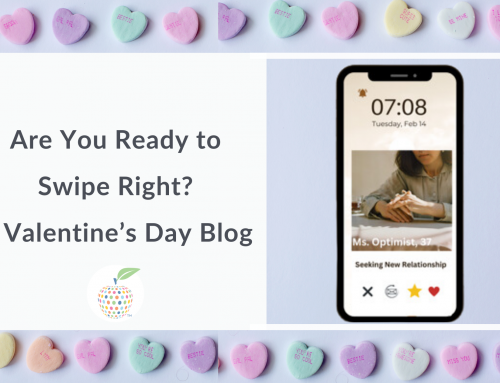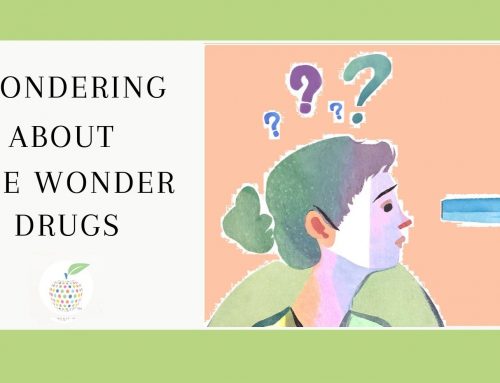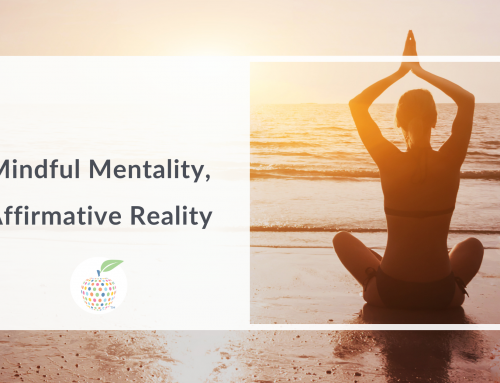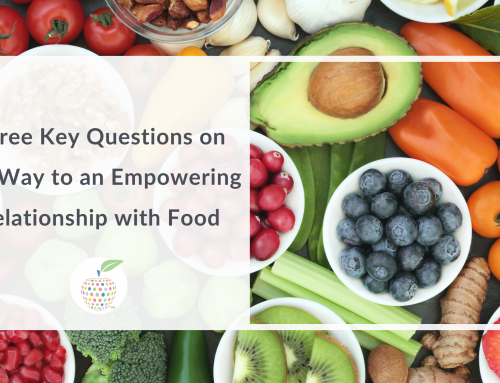For this Nutrition Therapist, assessing the bottom line regarding people’s eating strategies boils down to the basics: that dynamic duo, health and happiness. Strong health without happiness is something of a bummer, and likewise, happiness without good health is certainly less than ideal. I wish both for my children, my friends and my family. I support that goal for my clients as I work with them. I aspire to both for myself.
There is a tendency for people with eating issues –this runs a wide gamut that includes serial restrictive dieters, people subject to disordered eating, and of course people struggling with full-blown eating disorders– to see things in black and white, and lean toward an all-or-nothing attitude about food and ideas about eating. (I previously discussed the dynamics of Black & White eating in a blog post last summer.) Such inflexible thinking can lead to orthorexia, diets of deprivation and restriction, binge-eating and yo-yo dieting; all the negative fallout of what has become known as “diet culture.” So it is not surprising then, that as many people struggling to find workable eating strategies try to step away from the pitfalls of diet culture, certain kinds of Black-and-White thinking can come into play.
Before I go any further, please indulge me for a moment on a little detour: Here in our current culture of aggressively polarized opinions, outraged web screeds, and social media rants seething uncontrollably like runaway trains, people tend to get vocal and emotional when issues they hold dear are discussed. And, like any subject that gives rise to strong feelings (politics, religion, etc.) there are a lot of opinions about food and diet so strongly held that they become, for a lot of people, somewhat dogmatic. In a culture saturated with judgement and arbitrary, often unrealistic and unreasonable ideas about what body types are acceptable, there are understandable reasons for such strong feelings. For people subjected to negativity stemming from other people’s ideas about diet and related body image shoulds, outrage is well-earned. But living in outrage has the danger of crowding out more nuanced thinking. And without nuance, thinking may get stuck in inflexible, Black and White thinking.
There is a popular movement known as HAES, an acronym of Health at Every Size. It evolved as a reaction to, among other things, the all-too-prevalent body shaming aimed mostly at people that society considers overweight. Beauty standards are arbitrary, not fixed. Body shapes humans have found appealing in each other has fluctuated significantly in the few thousand years of recorded human expression. So there is certainly something very, very wrong in people being condemned simply on the basis of how they look. It is unfair and often cruel. But the biological truth is, extreme sizes (in either direction,) may contain health risks. I mean, extreme anything may contain health risks. There are, to be sure, plenty of people living in larger bodies that are in great health, but there are some who are not (just as there are plenty of gaunt people in great health, and some who are not.) What matters for me is, as I noted at the beginning of this post, your health and happiness.
HAES encourages everyone to celebrate their body regardless of the opinions of others, and I say, yes –a hundred times, yes!– as long as the celebration is rooted in good health to enjoy the celebration. I encourage everyone to celebrate his/her body by trusting their body’s inherent knowing what is best for it through intuitive eating and mindfulness. Taking good self-care –not for the superficial judgements foisted upon us due to some arbitrary beauty standards, but for our own long life and happiness– is the prize all of our eyes should be on.





